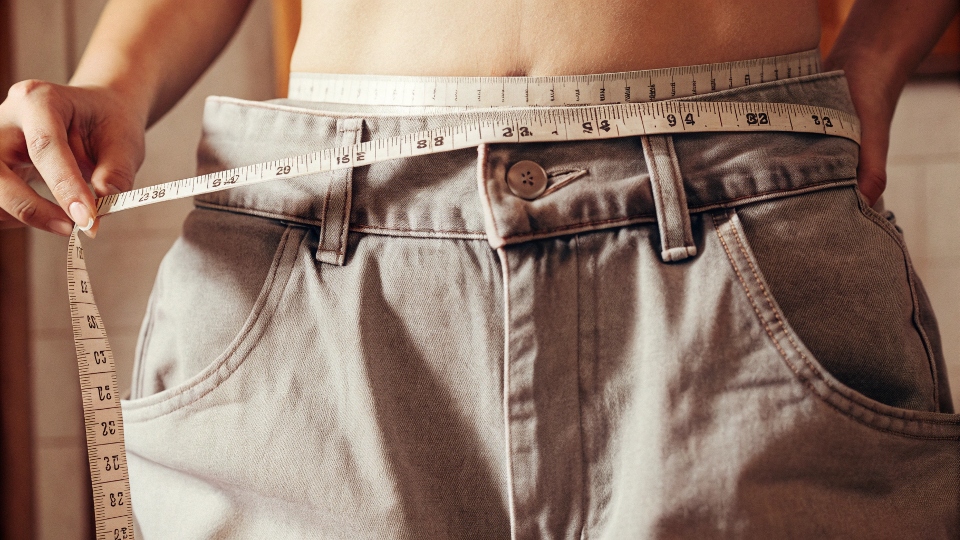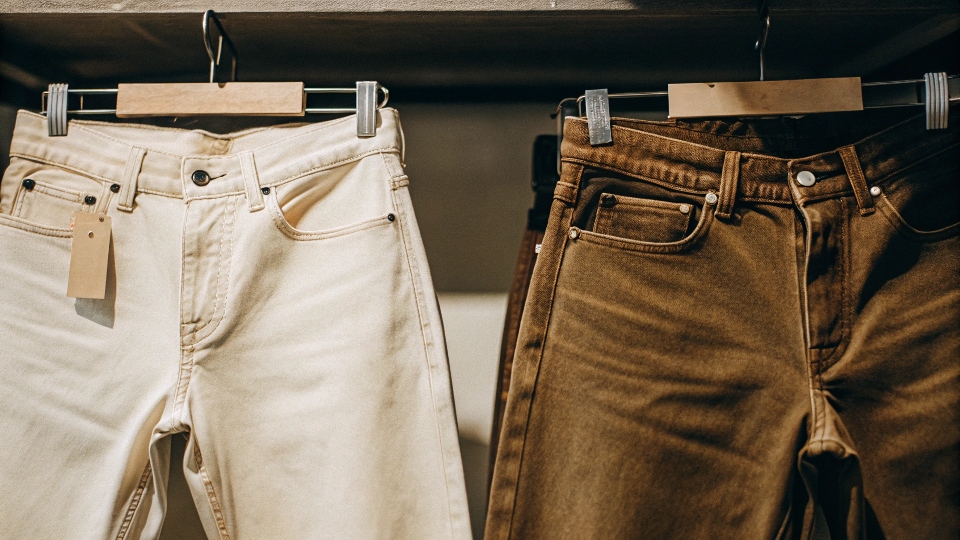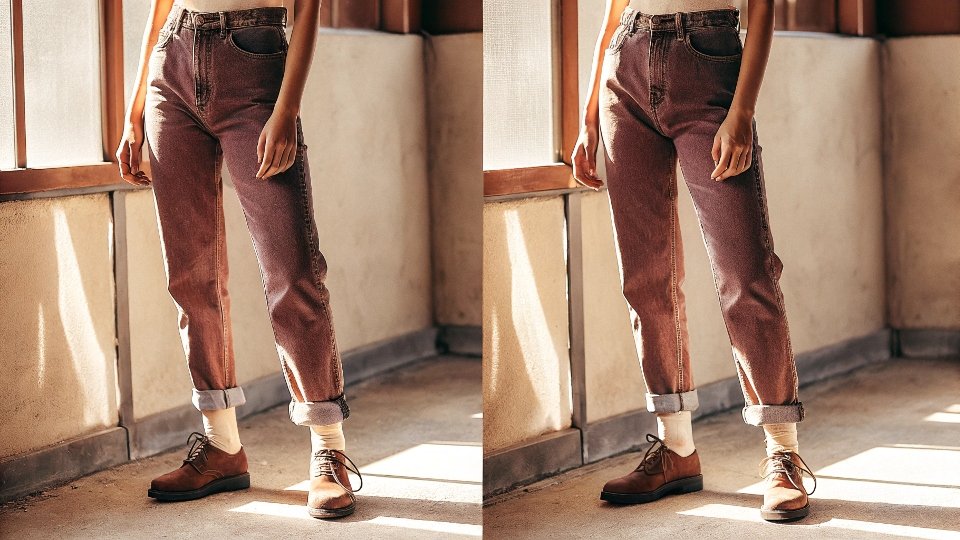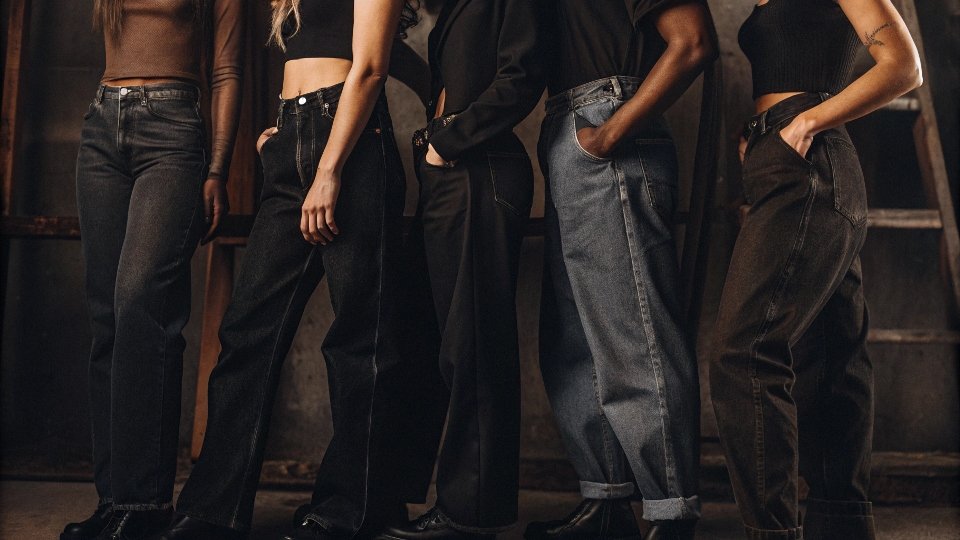You want to nail the baggy jeans1 look, but the sizing is a total puzzle. You're afraid of ending up with a pair that's either not baggy enough or just looks like a sloppy, ill-fitting mess.
No, you should not size down. For jeans intentionally designed as "baggy," buy your normal waist size. If you are trying to make a regular-fit jean look baggy, you actually need to size up and use a belt.
This is one of the most common questions clients and shoppers get wrong. In my factory, DiZNEW, I see the technical patterns for jeans every single day.
A "baggy fit2" is a specific silhouette that a designer creates. The bagginess is intentionally cut into the hips and legs.
It's not just a bigger size. Understanding this difference is the key to buying a pair that fits you correctly and gives you the exact look you're going for.
How do I know my baggy jeans size?
You're trying to buy baggy jeans online, but it feels like a total guessing game. You don't know if you should stick with your usual size or change it. Returns are a hassle you'd rather avoid.
Your baggy jean size is almost always your standard waist size. Look for phrases like "baggy fit" or "oversized cut3." This means the designer has already added the volume to the legs, so you just need to fit your waist.
There are really two ways to achieve the baggy look, and your sizing strategy4 depends entirely on which path you choose.
The first way is the most straightforward. You buy jeans that are sold and marketed as a "Baggy Fit." When my clients design a jean like this, they create a specific pattern.
For a size 32 waist, for example, the waistband will measure correctly, but the pattern for the thigh and leg opening will be much wider than a standard cut.
You just buy your normal size. The second method is the classic DIY or thrifting approach. You take a normal pair of "Relaxed Fit5" or "Straight Leg6" jeans and buy them one or two sizes too big.
A size 34 waist will naturally have wider legs than a 32. You then use a belt to cinch the oversized waistband, which creates that bunched-up, draped look.
| Sizing Method | How It Works | Best For |
|---|---|---|
| Buy True-to-Size | Choose jeans labeled "Baggy Fit" in your normal waist size. The volume is built into the design. | Getting a clean, intentional look from new or designer jeans. |
| Size Up a Regular Fit | Choose a "Straight" or "Relaxed" jean that is 1-2 sizes bigger than your waist. Cinch with a belt. | Thrifting, achieving a vintage look, or repurposing older jeans. |
Is it better to size down or up in jeans?
You're in the dressing room stuck between two sizes. One is snug, the other has some room. You don't know which to choose because you know denim changes after you wear it.
It depends entirely on the fabric. For 100% cotton jeans, it's often wise to size up slightly as they can shrink. For stretch jeans, sizing down is usually better because the fabric will loosen and relax with wear.
This is where my 20 years of experience with denim fabric really comes into play. The material dictates the fit. Let's start with my favorite: 100% cotton, non-stretch denim.
This is a sturdy, honest fabric. It has no synthetic give. When you first try it on, it can feel stiff and a little tight.
After washing, it can shrink a bit, especially if it's raw denim. Sizing up slightly gives you a comfortable starting point and a buffer against shrinkage.
On the other hand, we have stretch denim, which contains elastane. This material is designed to snap back, but it always relaxes over time. A pair that feels perfectly comfortable in the store might feel loose and saggy after just a few hours of wear.
For this reason, you should buy stretch jeans so they feel snug at first. They will quickly mold to your body for a perfect fit.
When the goal is a baggy fit, these rules change slightly; you would always size up a regular-fit jean, regardless of fabric.
How to fit baggy jeans?
You bought a pair of baggy jeans, but they just don't look right. Instead of looking cool and relaxed, they feel messy and you look lost inside them. There has to be a trick to it.
A good baggy fit comes down to three things: a secure waist, the right length, and a balanced top. The jeans must be anchored at your waist, the hem should interact cleanly with your shoe, and your top should be more fitted.
Let's break down the perfect fit from top to bottom. This is what separates a deliberate fashion statement from just wearing clothes that are too big.
1. The Anchor: Fit the Waist
The single most important part is the waist. This is the "hang point" where the entire garment is supported. Whether you bought a true-to-size baggy fit or an oversized pair that you're belting, the waistband needs to be secure at your natural waist or wherever you intend to wear it.
If the waist is slipping down, the entire silhouette will collapse and look sloppy. A belt is your best friend here.
2. The Break: Mind the Hem
The "break" is the term for where the bottom of your jeans meets your shoes. How you handle this can make or break the look.
Letting the fabric "stack" in neat folds on top of a chunky sneaker is a classic, clean look. A more extreme "puddle" of fabric on the floor can also work, but it's a much bolder statement.
If it feels messy, a simple cuff or roll can control the length and show off your footwear.
3. The Balance: Proportion is Key
Finally, think about the whole outfit. Baggy jeans add a lot of volume to your bottom half. To avoid looking overwhelmed, create contrast by keeping your top half more fitted.
A simple, tucked-in t-shirt, a bodysuit, or a cropped sweater will balance the proportions and keep your shape from getting lost.
Which body shape is best for baggy jeans?
You love the baggy jeans trend but worry it won't flatter your specific body type. You're concerned that they'll make you look wider, shorter, or out of proportion.
Any body shape can look great in baggy jeans. The key is not to find the "best body," but to find the "best baggy jean" for your body by using the fit to create a balanced silhouette.
This idea that a trend is only for one body type is completely outdated. At DiZNEW, we make jeans for brands that serve customers of all shapes and sizes.
It's all about finding the right cut for you. Baggy jeans are incredibly versatile. The trick is to use the volume of the jeans to your advantage to create a silhouette you love. For example, someone with a petite frame might worry about being overwhelmed.
A high-waisted baggy jean can actually create the illusion of longer legs. Someone with a curvier, hourglass figure can use that same high waist to highlight their waist-to-hip ratio beautifully.
Taller and slender body types can easily handle more dramatic, wider legs and lower rises. It's not about forcing your body into a trend; it’s about making the trend work for your body.
| Body Type | Best Baggy Jean Style | Why It Works |
|---|---|---|
| Petite / Shorter | High-waisted, straight-leg baggy cut | The high waist elongates the leg line. Avoids excessive fabric at the hem. |
| Curvy / Hourglass | High-waisted with ample room in hip/thigh | Defines the narrowest part of the waist while draping nicely over curves. |
| Tall / Slender | Low-rise, ultra-wide leg, or classic mid-rise | Can easily handle extra volume and length without being overwhelmed. |
| Athletic / Broader | Mid-rise, relaxed baggy fit | Provides comfortable room in the seat and thighs while creating a straight, balanced line. |
Conclusion
Forget sizing down. To get the perfect baggy look, either buy your true size in a designated "baggy fit," or size up a regular pair and cinch it with a belt.
-
Explore expert advice on selecting the perfect baggy jeans for your style and body type. ↩
-
Understand the definition of baggy fit and how it differs from other styles for better shopping. ↩
-
Discover the characteristics of oversized cut jeans and how they can enhance your wardrobe. ↩
-
Learn effective sizing strategies to ensure your baggy jeans fit perfectly and look stylish. ↩
-
Get insights into the differences between relaxed fit and baggy jeans to make informed choices. ↩
-
Find styling tips for straight leg jeans that can complement your baggy jeans look. ↩










